We spend a day chilling by a river of ice on a visit to Perito Moreno Glacier in Argentina’s Los Glaciares National Park.
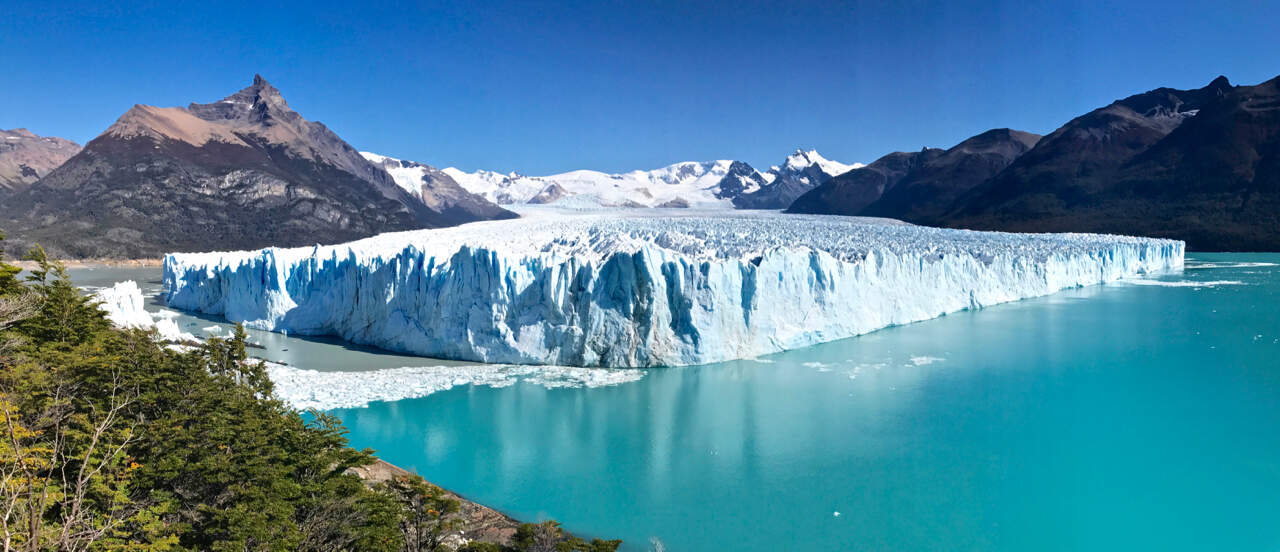
A shotgun crack splits the air and ricochets up the valley. Heads swivel and cameras wave about as excited faces search out the source of the noise in the vast glacier opposite.
Across the lake, a small wave surges away from the glacier wall. It’s the only sign that a chunk of ice has slipped from the glacier face and hit the milky-blue water of Lago Argentino below.
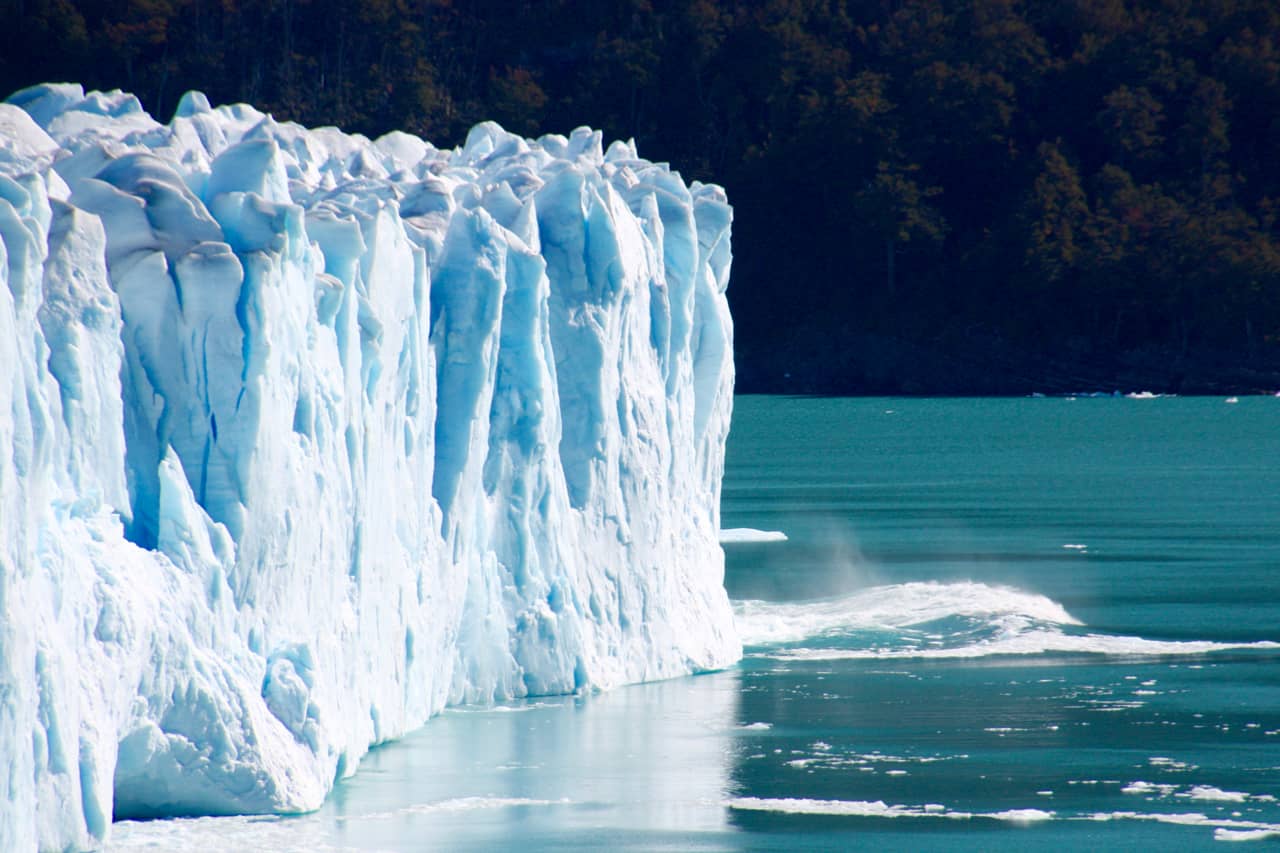
But we missed it. Again.
We had no idea when we set out on a visit to Perito Moreno Glacier that watching a wall of ice could be so addictive.
A Glacier On The Move
As glaciers go, Perito Moreno Glacier is busy. At 250-square-kilometres, it’s vast, but it isn’t the biggest glacier in Argentina’s Los Glaciares National Park.
What sets it apart, both in Patagonia and around the world, is that Perito Moreno Glacier is ‘in balance’. Unlike most glaciers, this one isn’t retreating, it’s advancing.
In fact, the 30-kilometre-long river of ice is one of the fastest moving glaciers on Earth, pushing forward up to 2-metres every day.
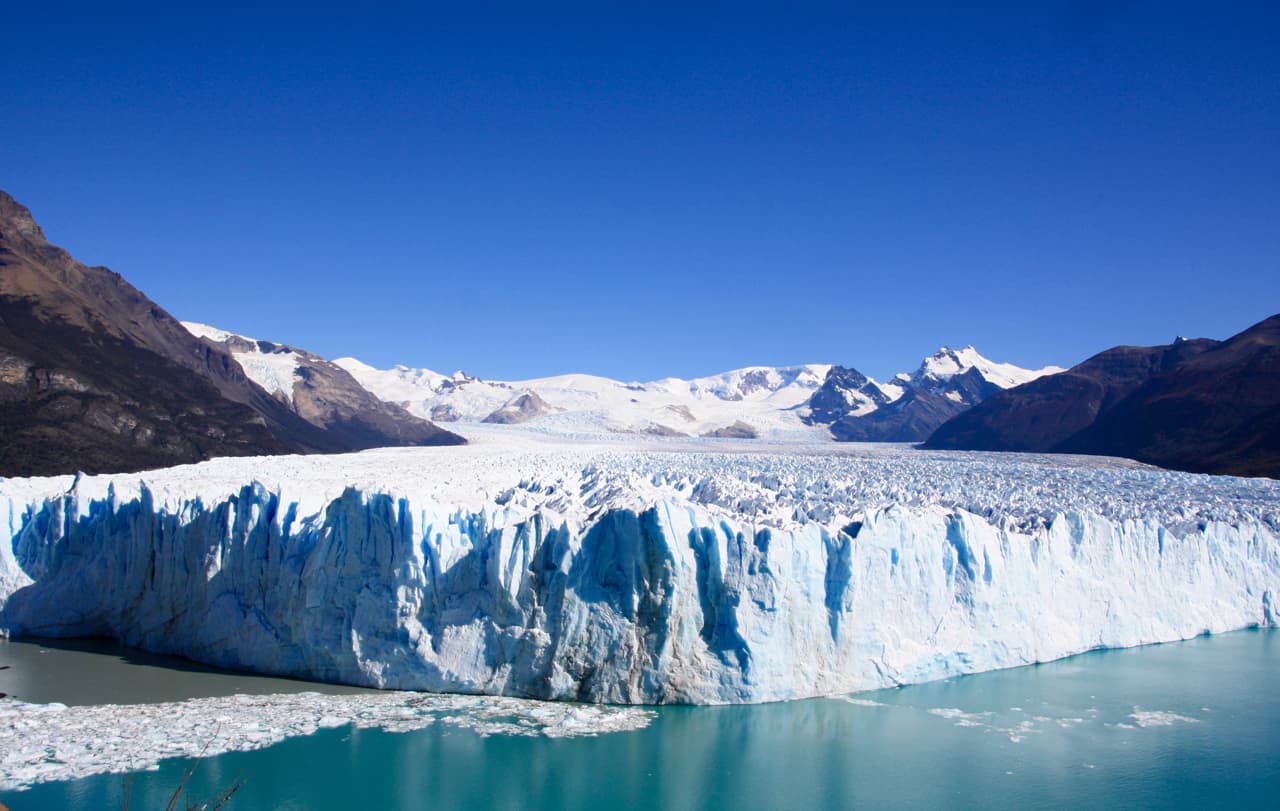
All that pressure and force leads to some spectacular icefalls at the glacier’s terminus, an immense wall of ice stretching 5-kilometres and soaring to heights of 70-metres in places.
Even when it’s not churning huge bergs into the lake, Perito Moreno Glacier is a giant factory of noise and activity.
Loud cracks and crashes boom across the lake every few minutes, stopping visitors in their tracks in the hopes of witnessing a big icefall.
Getting Up Close To The Ice
As the region’s most accessible ice floe, there are a handful of ways to get up close to the ice on a visit to Perito Moreno Glacier.
You can join a tour and strap on crampons for a hike up onto the glacier itself, like we did in Norway.
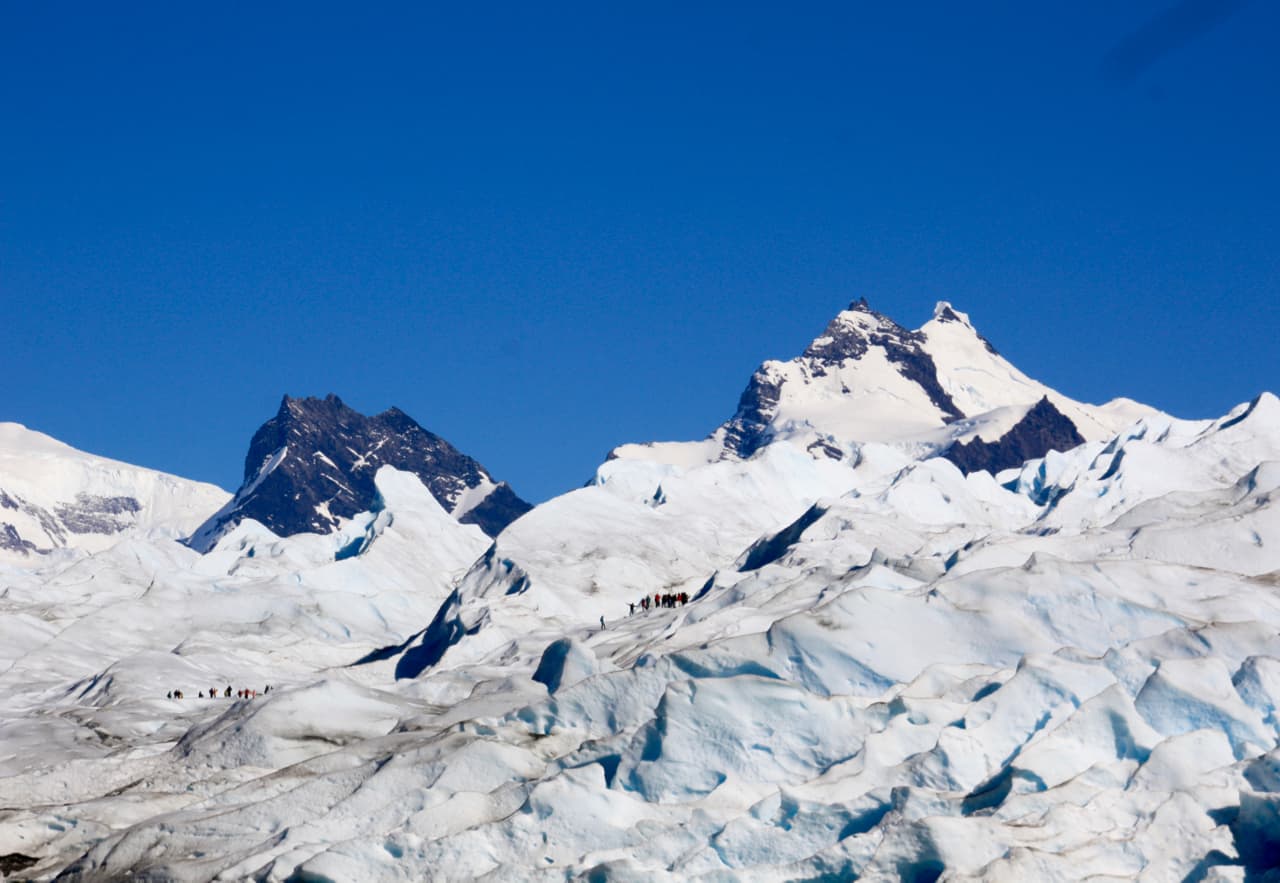
You can also approach the glacier aboard a boat. In the warmer months, catamarans and smaller vessels regularly ferry visitors to Perito Moreno’s north and south faces.
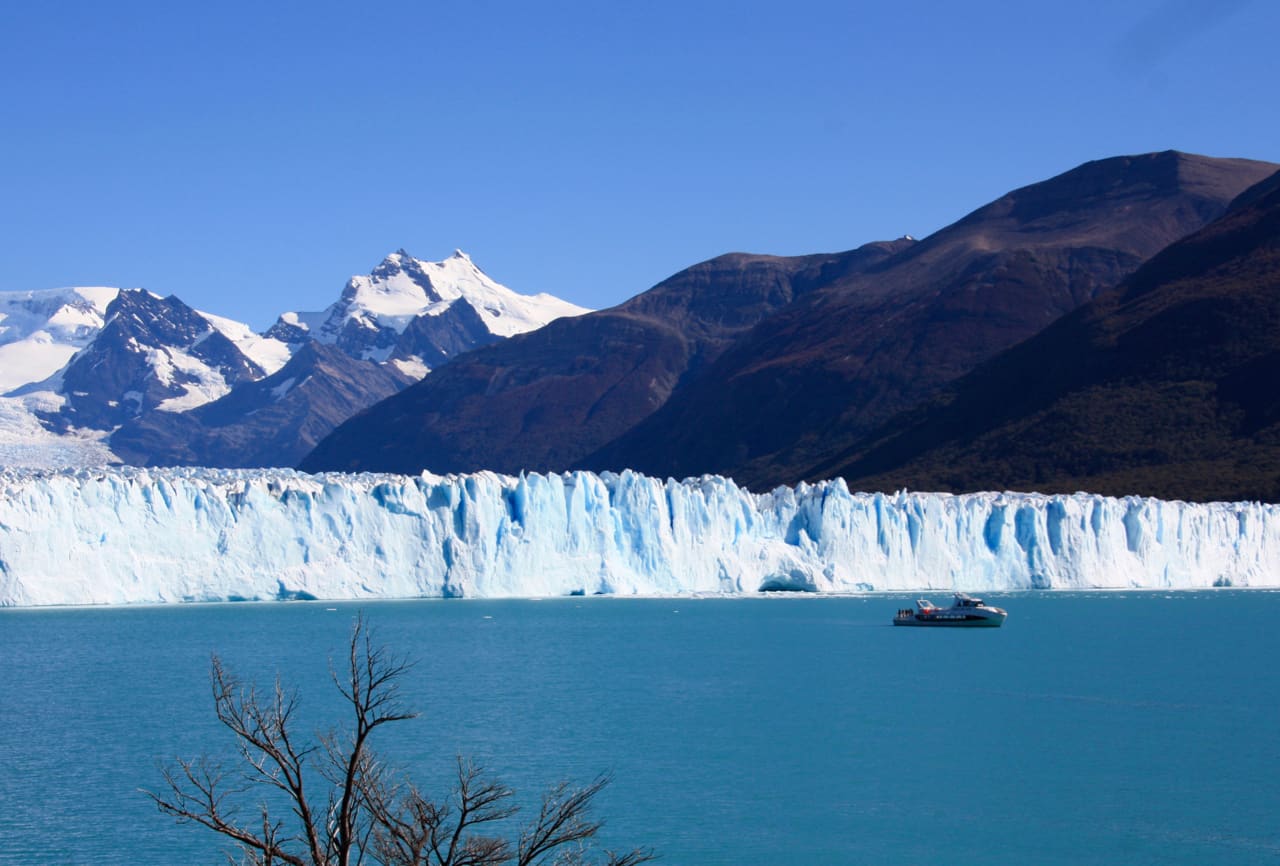
We opt for a ride to the south face on the latte-coloured Brazo Rico side of the lake. From the pier, we boat past impressive ice-gouged rises before pulling up around 300-metres from the terminus and slowly cruising along its length.
The 45-minute jaunt certainly offers a jaw-dropping perspective of the glacier. But we spend most of the journey jostling at the boat’s railings with the dozens of other passengers, trying to glimpse the glacier over the shoulders of tall folk. If you can, try and get on a smaller boat.
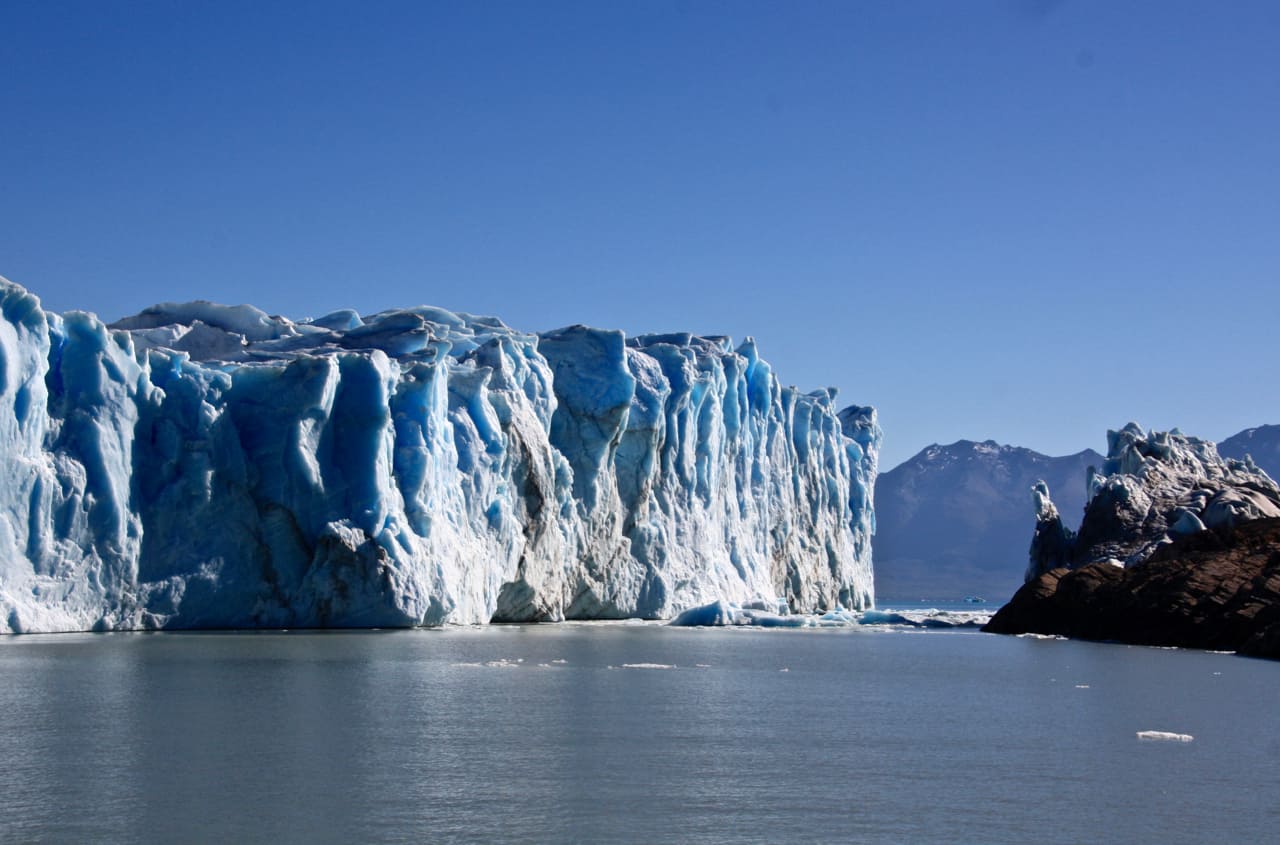
As it turns out, we actually prefer the views of Perito Moreno Glacier from the land.
On the Península de Magallanes, Argentina’s national park service has built an excellent network of balconies and wooden walkways over different levels, all with incredible views of the ice.
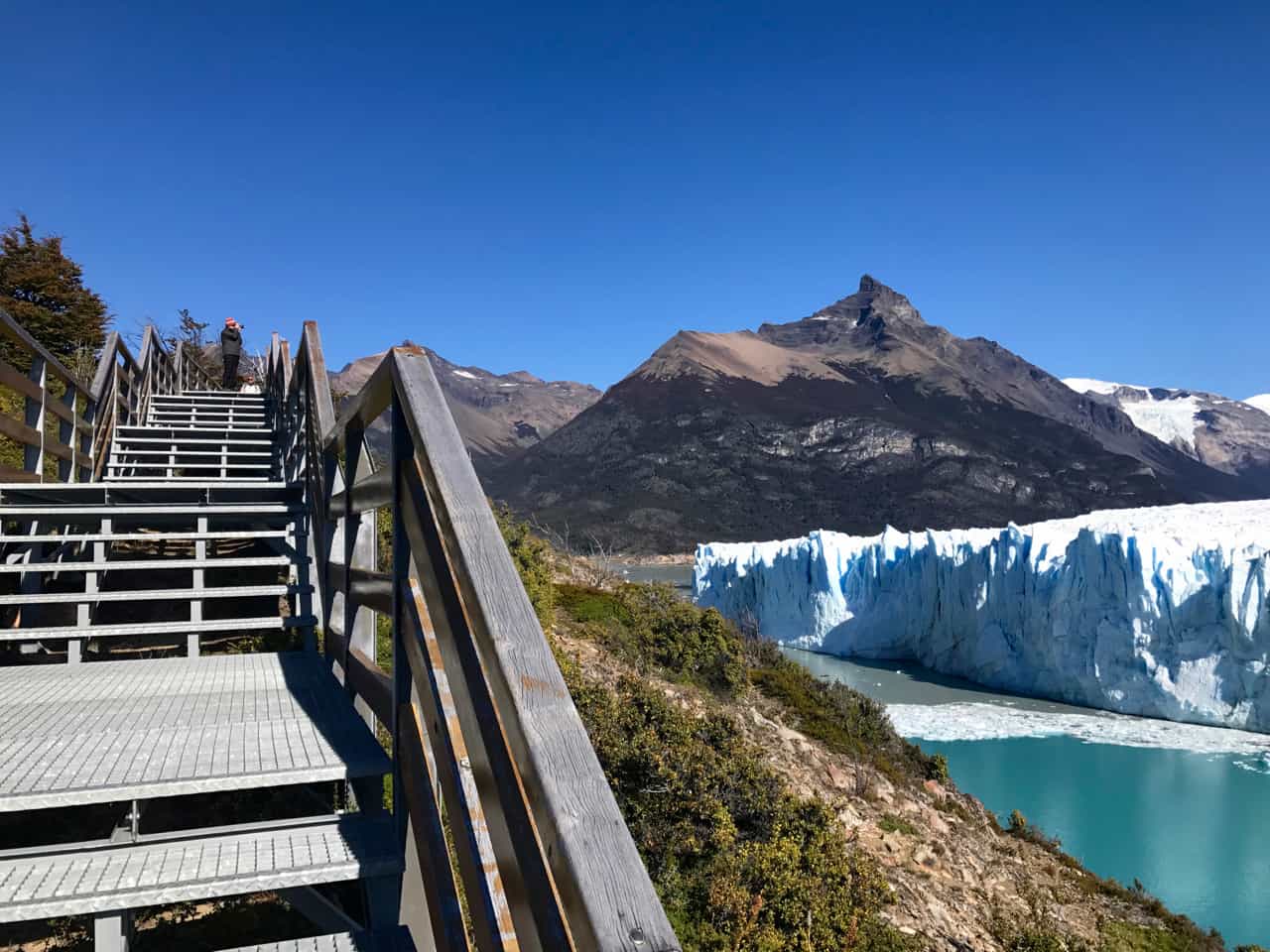
It’s on these platforms that we spend the next couple of hours waiting for our big break.
Icy Insights At The Glaciarium
We’ve come prepared. A day earlier, we spent the afternoon brushing up on our knowledge of glaciers at the fascinating Glaciarium, just outside El Calafate.
Packed with exhibits on everything from how ice forms to the history of glacier study and the impacts of climate change, the highlight for us was a time-lapse video of Perito Moreno Glacier.
Taken over months, the time-lapse turns the glacial movement of the ice into a dynamic, fast-flowing river. Now we’re keen to see the slow-motion version of that powerful drama in real life.
Back at the platforms we watch and wait. Now and then we catch sight of a football-sized ice chunk just as it hits the water. Despite threatening a big calving at any moment though, the glacier holds itself together.
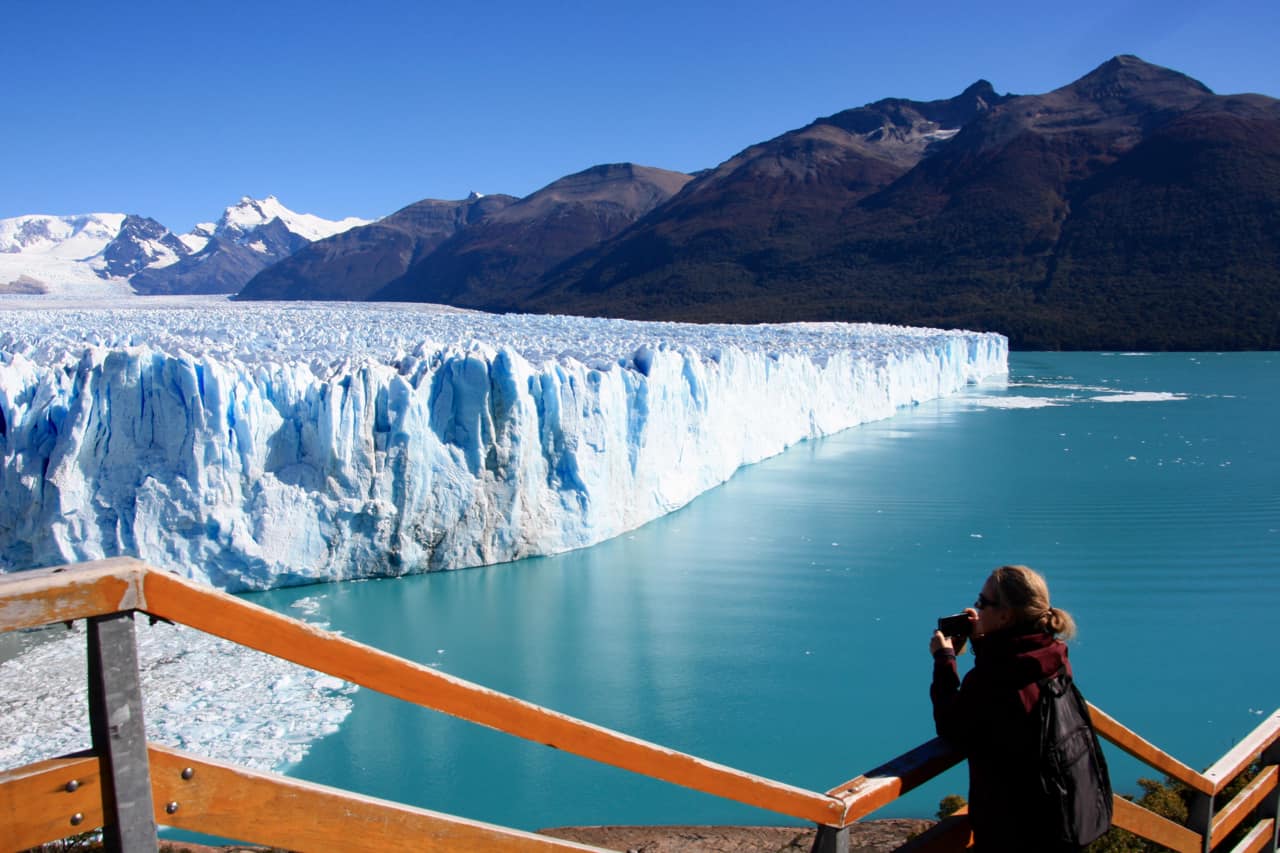
Hours later, we reluctantly make our way along the final length of walkway back to our bus. Just as the glacier drops out of sight behind us, we hear a thunderous crash, and a cheer from the people on the rise. A big icefall.
And we missed it. Again.
Classic, unpredictable nature. But that’s exactly what makes it such compulsive viewing.
Good to know
Getting there: Perito Moreno Glacier is in the southern sector of Los Glaciares National Park, 80km east of El Calafate in Argentina. If you drive, there’s a carpark at the site and a free shuttle that buses visitors from there to the walkways.
If you don’t have a car, you can easily organise a visit to Perito Moreno Glacier through your hostel in El Calafate; we did this and travelled with Mundo Austral. We had a great guide on board who provided plenty of insights on the region and the glacier, and helped sort out entry fees and boat rides.
Costs: Most day tours from El Calafate include only the cost of the transfer to and from the glacier, and sometimes a guide on the bus. Park entry fees and boat trips are extra. We paid ARS$700 (appx. USD$45) each for the transfer and guide.
For non-Argentinians, entry to Los Glaciares National Park was ARS$500 (appx. US$32) per person. The boat trip was ARS$400 (appx. USD$25) each.
The Glaciarium: Worth a visit if you’re interested in the nuts and bolts of glaciers and ice, the Glaciarium Patagonian Ice Museum is 6-kilometres from El Calafate. It’s ARS$270 (around USD$18) and there’s a free shuttle that departs hourly from the carpark Av. 1 de Mayo between Roca and Libertador.
